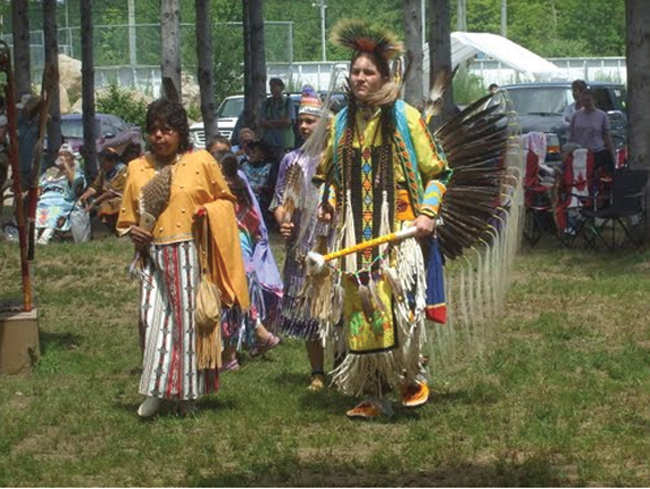Community Profile: Sheshegwaning FN – Council agenda aims for physical and fiscal fitness

By Melissa Cooper
Since being elected in November 2011, Sheshegwaning First Nation council has kept busy diversifying a business portfolio that includes shares in the new Manitoulin Island Hotel, a 60MW wind farm development, and a quarry, located adjacent to the community on band-owned property.
“We inherited a small quarry (off-reserve) that was already operational,” says Chief Joseph Endenawas, who has been involved in band administration since 1976.
Economic Development Officer (EDO) Emilio Tomaselli, a two-term band councillor, says
training has been provided to employees the new venture.
“Right now we are waiting for the half-loading restriction to be lifted in May. This year is going to be the first operating year so we’re all geared up now to get started in the quarry business.”
Odawa Stone Limited Partnership will start operations with a supervisor and two trainees on site, extracting dimension limestone blocks and slabs, as well as cladding, which is used for both exterior and interior facing walls. They hope to come across some landscape rock in the process.
“We have trainers come in from overseas to train on how to operate the equipment,” Tomaselli said. “This project means capacity development, employment, skills training as they’re going to be operating heavy equipment–and wealth generation for the First Nation as a result.”
Sheshegwaning received funding for the project’s training component from the Ministry of Colleges and Universities. Additional support came from the Northern Ontario Heritage Fund and Waubetek Business Development Corporation.
Located at the western tip of Manitoulin Island, Sheshegwaning has a total land base of 2,025 hectares. About 120 of 390 citizens live on reserve.
Community facilities include a health centre, public library, a school (St. Joseph’s Anishinabek School), convenience store and a seasonal cabin rental business. The First Nation also operates Nishin Lodge, a large cedar log cabin which can accommodate up to 12 guests in spa surroundings. The lodge became a band-owned business in 2004, and employs one person seasonally as well as two others on a casual basis.
Current members of band council are Gregory Sampson, Gene Cada, Albert Cada, Emilio Tomaselli and Chief Joe Endanawas. They have focused on health and wellness initiatives, as well as economic development.
“Sheshegwaning also started a sports program when the new council got elected into office called ‘Right to Play’,” says executive director, Dennis Blackburn, who has been on the job for about four years. He mentions plans to develop a hiking trail overlooking the North Channel as well as build an addition to the current community complex to create a gymnasium capable of hosting larger events..
Chief Endenawas says his community is getting healthier as its economy improves.
“We currently have a very small gym at the school, not very big for, say, basketball. Building this gymnasium will get Dennis, the band administrator into shape!”
Plans for the outdoor hockey rink exemplify the focus on the physical as well as the fiscal.
A rooftop will be constructed over the rink, which will be covered with a 10kW solar energy project, pending approval by the Ontario Power Authority as part of renewable energy generation.
“The rink itself is an asset that we will be paying into,” says Emilio Tomaselli, “so it would be good to have something on there that will help to pay off that investment such as solar energy.”
Sheshegwaning is already participating in other energy-related projects on the island including partnership in the 60MW McLean’s Mountain Wind Project with Mnidoo Mnising Power, a company formed by the United Chiefs and Councils of Mnidoo Mnising First Nations and Northland Power. But they are limited to smaller projects locally.
“We only have single-phased power coming into our reserve so we are very limited on renewable energy generation here,” the EDO says.
Chief Endenawas sees economic development as an essential long-term strategy to provide opportunities for community youth.
“The main goal is to build economic opportunities for citizens, the young people”, he says. “I realize that we cannot please everyone, but we hope to unite the community (on these decisions).”
Before committting to such major projects such as the Little Current hotel investment, Sheshegwaning council hosted community meetings to get input and feedback on the business opportunity.
“Our band council is about being transparent and being accountable,” says the chief. “We’re where we should be with our audits.”
According to the Internal Auditor’s Report for the period ending March 2012 — which is publicly posted online at Aboriginal Affairs and Northern Development Canada’s website — the Sheshegwaning First Nation is in accordance with their reporting as stated by KPMG LLP Chartered Accountants.


